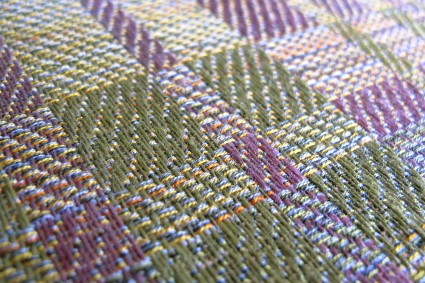The story of London Cloth is a rather engaging one. It all boils down to a rather single minded fascination for looms, mechanical ones specifically. 2 years on, the hobby has become a proper weaving shed with both mechanical and power looms, and clients such as Ben Sherman.
The factory of James Ince & Sons, the oldest established umbrella makers in the country. Currently owned by the 7th generation, it has not only been around since the invention of the umbrella, but is responsible for the umbrella designs for Marry Poppins as well as Hagrid.
Starting in 1866, a shoe factor by the name of William Green came regularly from Northamptonshire up to the City of London to get orders and then take them back to Rushden where, in 1874, he opened his first factory as William Green & Son, founding the company we know today as Grenson.
The British textile industry, chances are, never would have reached its former pre-offshoring movement glory if it was not for immigrants. In fact, if it had not been for the Huguenot influence on silk weaving – and by means of cross-fertilisation, cotton and wool – the industry would have served a pure domestic purpose for the 18th, 19th and first half of the 20th century.
Drakes is synonymous around the world with the most beautiful silk ties that money can buy. Founded thirty years ago on a top floor in Old Bond St and operating from a former Royal Mail depot in Old St for the past twenty, Drakes brought manufacturing back to the East End. A portrait.
For Araisara, one of the biggest influences in her career as a fashion designer, in her life, comes from a women she tenderly calles 'Granny.' Granny is the inspiration behind Araisara's SS2010 'Hibiki' (echo) collection, which features stunning Sumi-Nagashi dyed fabrics.
Recently, my colleague Ilaria Pasquinelli and I had the opportunity to participate in a, generally speaking, consumer facing product showcase and trade show.
For the purpose of this research, we built an interactive task which required the visitors to cut off one of their garment labels (i.e. the washing instructions), and then pin it to a map attached to a cork board according to 2 dimensions:
– ‘Made in‘: Where the garment was manufactured.
– ‘Made from‘: What the primary material the garment was made of.
The Spitalfields taylors Alexander Boyd is London's last shirt maker. All their shirts are made at the Rayner and Sturges factory in Kent. Impressions from the factory, and the 'making of' a bespoke Savile Row shirt.
In Tunisia, like across most of the Maghrib region, textiles, their significance and methods of production remain a firm part of the country’s identity and history. A portrait.
With Sao Paulo Fashion Week just closed I am here to write (again) about Brazilian fashion.
This time it is about an interesting project I got to know of personally, Projeto Contem, a private and independent initiative.
Projeto Contem is both a brand and a network of entrepreneurs working in textile and fashion as well as in food, beauty, design, arts, music and cinema.
Algha Works are Britain’s last metal spectacle frame manufacturer, operating from Fish Island - close to the 2012 Olympics' site - for the past century. A portrait.
"Made in [your country]" is an ongoing attractive topic in the contemporary sustainable fashion discussion. In many cases, one that borders - or is even right in the middle of - some rather right-wing nationalist sentiments. Europe as a whole does not need that - there is enough quality design and craftsmanship to be proud of without getting into shallow waters.
Resting the case for innovation.
“Globalization presumes sustained economic growth. Otherwise, the process loses its economic benefits and political support.” (P. Samuelson). There is an evident illogic, impossibility, of the traditional 'economic growth' lemma.
The developments in the British Midlands of the industrial revolution have coined the textiles industry possibly like no other.
It was is this area that we find the roots to the modern textile industry, including case studies that (nearly) could be dated from our modern times. From archives and historical records the industrial revolution left behind in the area, we can gain many an insight that will trigger a simple ‘déjà-vu’ when taking note of news about textile factories from the Far East that with regularity hit our headlines.
J&R Designs in Homerton is a small factory in London's East End, the only remaining of its kind, run by the Persaud family, and which specialises in hand crafted quality leather handbags manufacturing. A portrait.
Book Review: In Second Skin India Flint analysis the sustainable fashion challenge from the practicalities of a consumer. She makes it clear that our choices have a direct impact. Sadly, many of the practical examples she provides will push consumers away, rather than towards, improving their track record.
“Innovatively combining new British and sustainable fabrics with reclaimed textiles” – this is Goodone’s raison d’etre in their own words. Their most recent initiative: A proper upcycling factory that can cope with both, pre- and post-consumer waste, and is the first ‘streamlined’ upcycling facility equipped and ready to work with designers on something more than one-offs.
Julius Walters of Stephen Walters & Sons is a ninth generation weaver of a family business founded 1720. This is the company that wove the silk for the Queen’s coronation robes and for Princess Diana’s wedding dress.
'Make it British', or the equivalent: French, Italian, German, Spanish ..., is often talked of as the ultimate panacea to address the lack of sustainability in the fashion industry. A few reasons why it all is slightly more complicated than it sounds.
“The raison d'être of Lilou is my desire to connect people with 'their' colour.
I wanted to take the opportunity and expose people to their colour, the ones that make them feel relaxed, energized, happy, motivated..." says Ingrid Vercruyssen, the textile designer behind Lilou.



